18 Retaining Wall Ideas for Stylish & Functional Landscaping
Retaining walls are a fundamental part of landscaping and garden design. They prevent soil erosion, manage slopes, and can even transform awkward terrains into beautiful, usable spaces.
But retaining walls aren’t just functional; with the right design and materials, they can enhance the aesthetic appeal of your outdoor areas.
Whether you’re looking for a modern, sleek design or a rustic, natural feel, this list of retaining wall ideas will inspire your next outdoor project.
18 Retaining Wall Ideas
1. Wood Retaining Walls
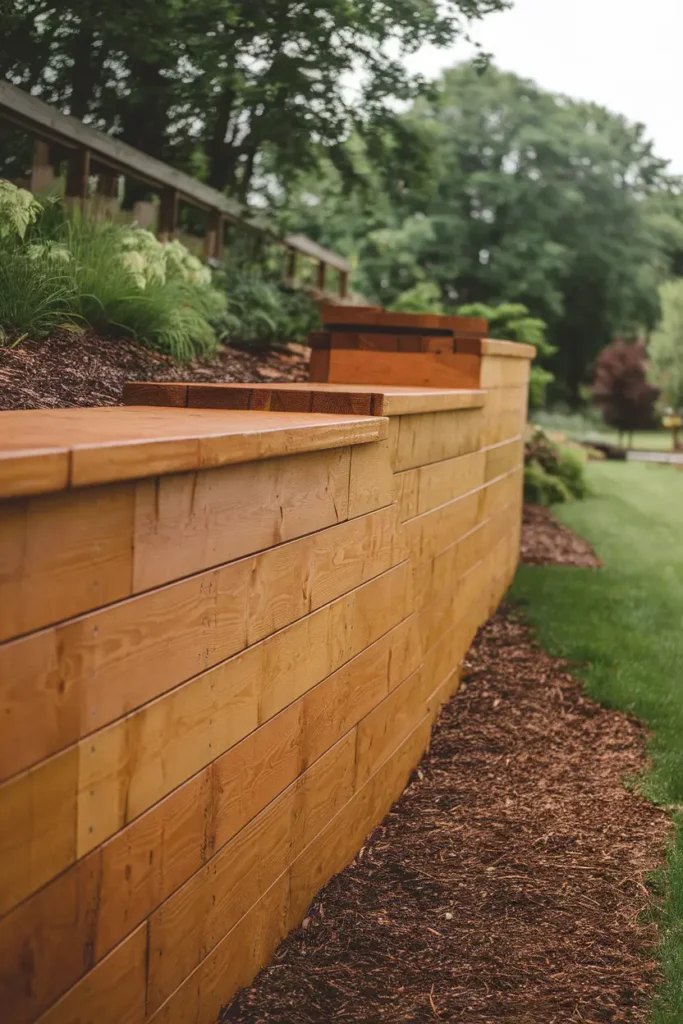
Wood is a classic and cost-effective choice for retaining walls, offering a warm and natural aesthetic that complements most landscapes.
Commonly used materials include pressure-treated timber and railroad ties, both known for their sturdiness and rustic charm.
While wood is visually appealing and relatively easy to install, it does require regular maintenance to prevent issues like rot, insect damage, or warping caused by moisture exposure.
Adding a protective sealant or stain can help prolong its lifespan and maintain its appearance.
2. Brick Walls
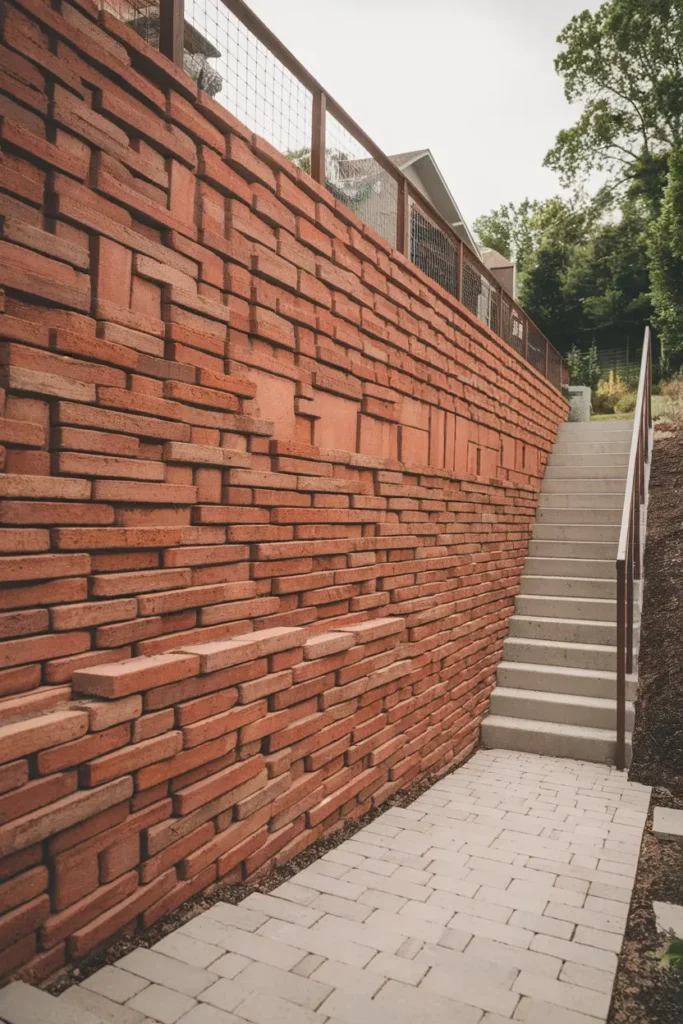
Timeless and elegant, brick retaining walls are an excellent option for creating a polished and refined outdoor space.
Known for their durability and versatility, bricks can be arranged in various patterns to suit both traditional and modern designs.
They are resistant to weather and wear, making them a long-lasting investment.
For added visual interest, consider pairing bricks with contrasting mortar colors or integrating decorative brickwork.
Brick walls also allow for creative landscaping accents, such as flower beds or built-in planters.
3. Concrete Block Walls
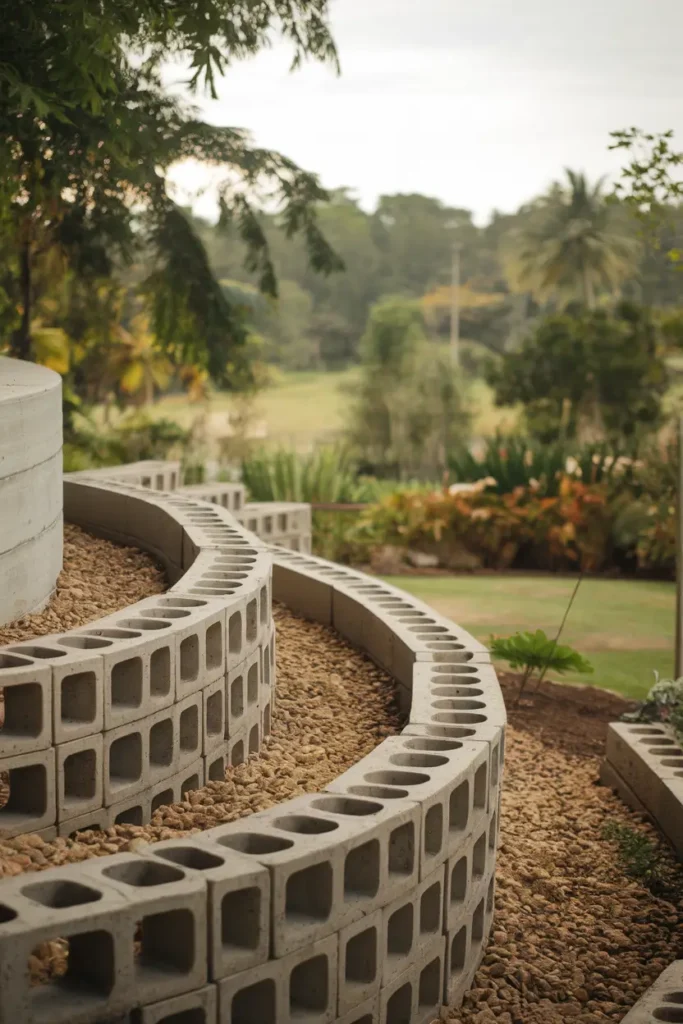
Concrete blocks are a practical, budget-friendly option that offers a high degree of flexibility in design. These modular blocks are easy to stack and install, making them a popular choice for DIY projects.
Their versatility allows for creative styles, including textural patterns, curved layouts, or tiered walls for added depth.
Concrete blocks are available in a variety of sizes, shapes, and finishes, including smooth, textured, or colored options, which can help blend them seamlessly into any design theme.
Additionally, they are highly durable and low maintenance.
4. Poured Concrete Walls
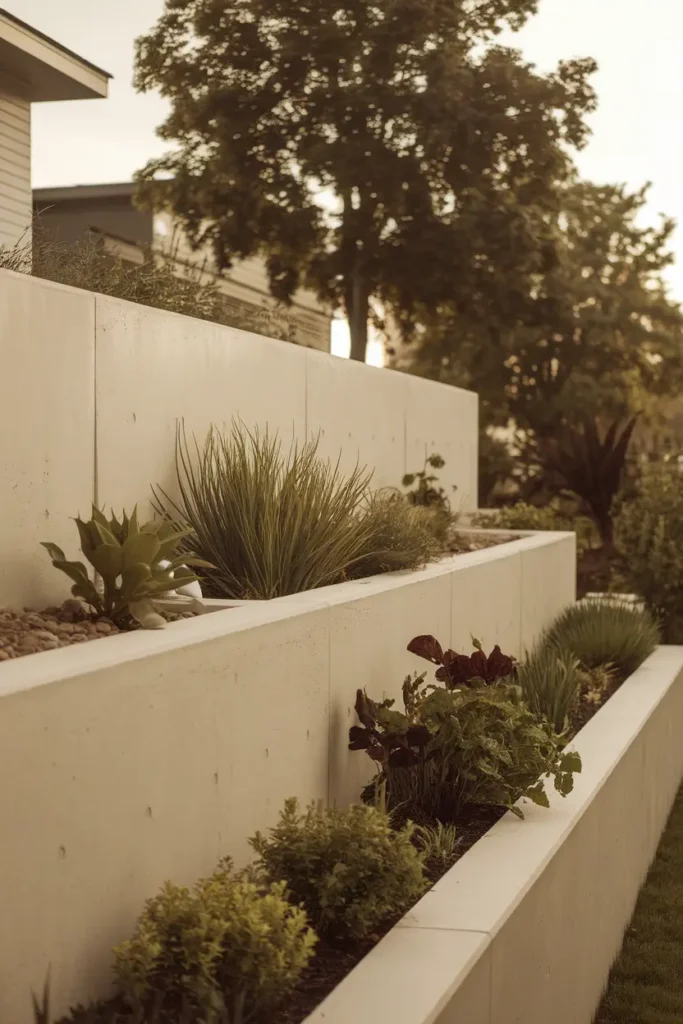
Poured concrete walls provide a minimalist, sleek solution for contemporary landscapes.
This type of wall is extremely durable and capable of withstanding heavy pressure, making it ideal for larger retaining projects or areas prone to erosion.
Poured concrete can be left smooth for a clean, modern look or textured and stained for added character. It’s highly customizable, allowing for unique shapes, curves, and finishes to match your design vision.
However, due to its complexity, installation is best handled by professionals for optimal results.
5. Natural Stone Walls
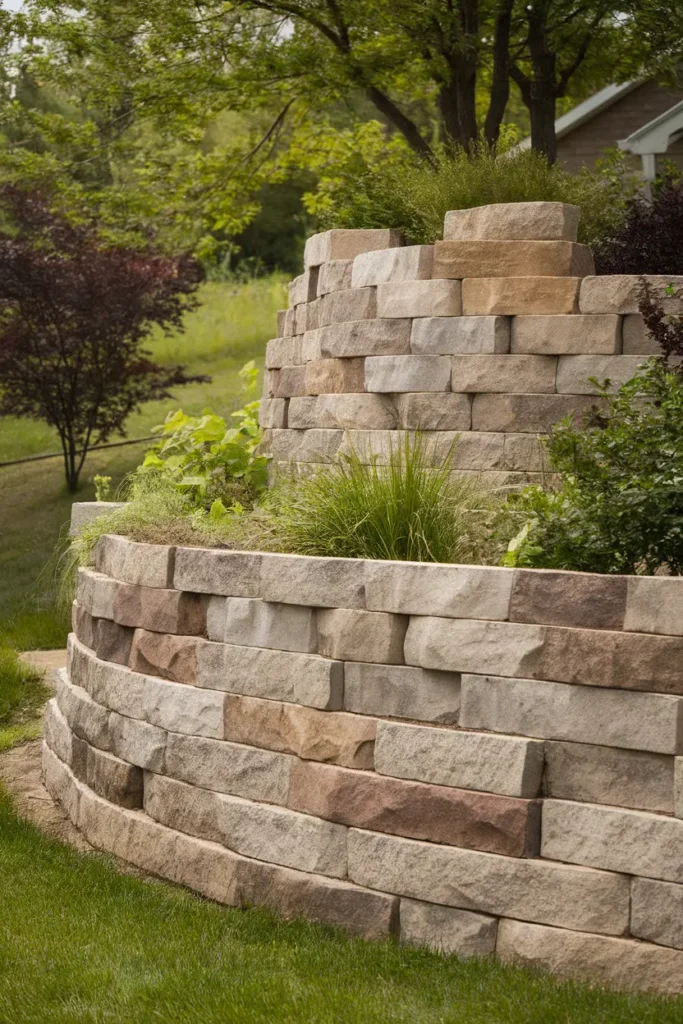
For a rustic, organic look, natural stone walls are an unbeatable option. Using materials like granite, limestone, or slate, these walls blend seamlessly with outdoor environments, making them perfect for gardens, pathways, or nature-inspired landscapes.
Natural stone walls are incredibly durable and can last for decades with minimal maintenance.
To enhance their aesthetic, pair them with creeping plants, moss, or flowers that cascade over the edges.
The irregular shapes and textures of the stones add depth and character, creating a truly unique and timeless feature for your yard.
6. Gabion Baskets

Gabion walls, constructed from wire cages filled with rocks, are a modern and rugged choice for retaining walls.
Not only do they offer excellent drainage, but they also have a striking industrial appeal that works well in contemporary or minimalist garden designs.
Gabion baskets can be filled with various materials, including gravel, river rocks, or even recycled glass, to achieve different looks. They are sturdy, weather-resistant, and low maintenance.
For added contrast, consider combining gabion walls with other materials like wood or concrete for a unique, layered design.
7. Sheet Piling

Sheet piling involves thin steel, aluminum, or vinyl panels driven deep into the ground, making it ideal for vertical slopes, tight spaces, or areas with limited soil support.
While it’s primarily a practical solution, sheet piling can be styled to suit your landscape by using textured finishes, painted coatings, or decorative paneling.
This method is particularly useful for waterfront properties or locations with high water tables, as it provides strong support and helps prevent soil erosion.
Despite its utilitarian nature, creative design can make sheet piling visually appealing.
8. Boulder Walls
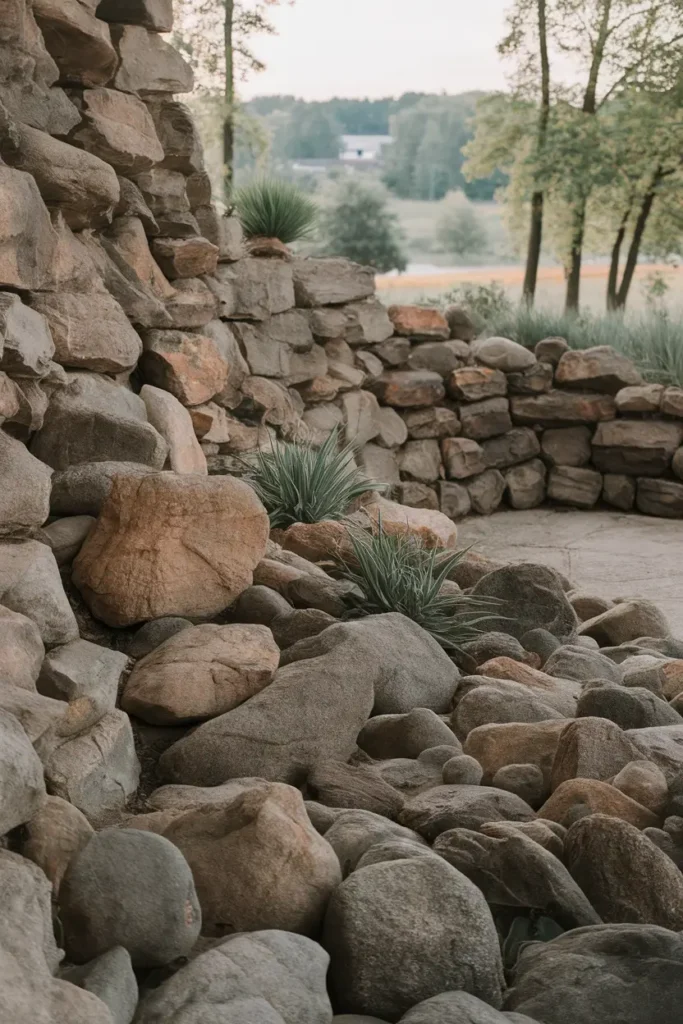
Boulder walls use large, uncut stones to create a raw, architectural retaining wall that mimics the natural landscape.
These walls are not only visually striking but also incredibly durable and able to withstand the test of time with minimal maintenance.
The irregular shapes and sizes of the boulders give a rugged, earthy aesthetic that works well in rustic or natural settings.
Boulder walls can also be paired with vegetation, such as native grasses or wildflowers, to enhance their organic look.
Additionally, their weight and sturdiness make them a practical option for holding back significant soil loads.
9. Gravity Walls
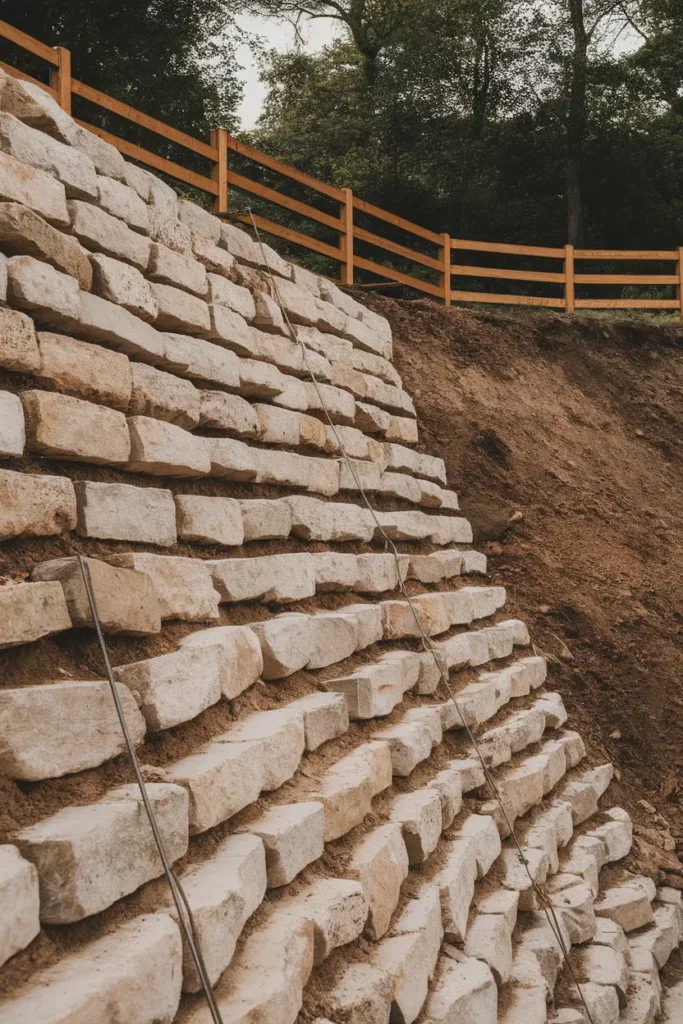
Gravity walls rely on their mass and weight to hold back soil, making them a straightforward and dependable choice for smaller projects.
These walls work by resisting the pressure of the soil with their own bulk.
Traditionally made from stone or concrete, they can be enhanced with decorative facades to suit your style.
Their simplicity in design and construction makes them a popular choice for gardens, patios, and other minimal landscaping needs.
10. Cantilevered Walls

Cantilevered walls use an “L” or “T” shape to anchor the weight of the soil effectively. This design uses the leverage of the extended base to counteract soil pressure, making it a robust and durable solution for heavy-duty requirements.
While they are engineered mainly for functionality, cantilevered walls can also be enhanced with veneers, accent materials, or even lighting to achieve a sleek and polished appearance.
These walls are ideal for larger projects or areas with significant soil loads.
11. Anchored Walls
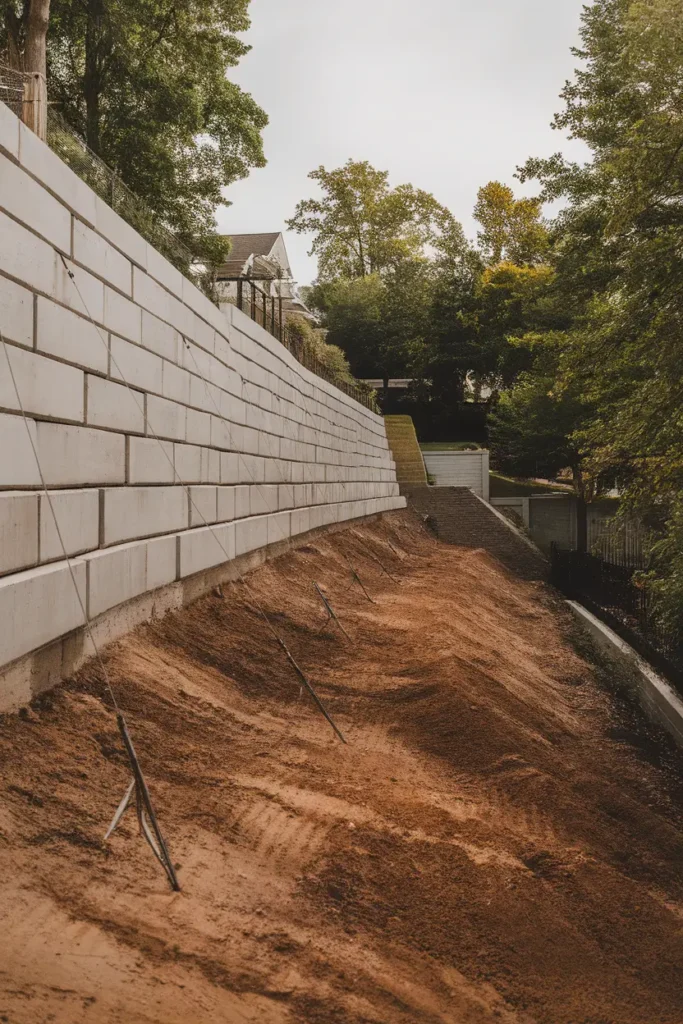
Anchored retaining walls provide maximum stability by using cables or rods that are driven deep into the soil to anchor the structure securely.
These walls are particularly useful for projects requiring high durability, such as steep slopes or tall retaining walls.
By combining the strength of the anchors and the wall’s structure, they can hold back significant soil volumes.
They are often used in both commercial and residential landscaping where long-term reliability is a priority.
12. Reinforced Soil Walls
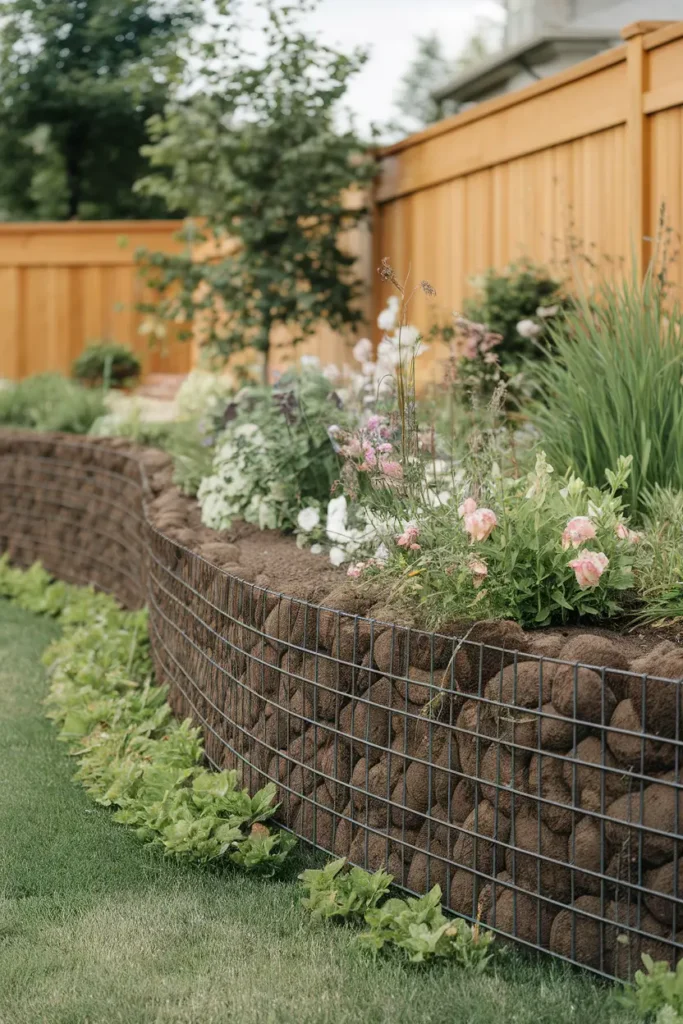
Reinforced soil walls combine natural soil with synthetic materials like geotextiles, metal strips, or grids to provide added stability.
This hybrid approach makes them cost-efficient and highly practical for large-scale landscaping or construction projects.
They are often used to handle extreme loads in environments such as highways, bridges, or large gardens.
Additionally, they can be integrated with vegetation for a more natural and environmentally friendly appearance.
13. Crib Walls
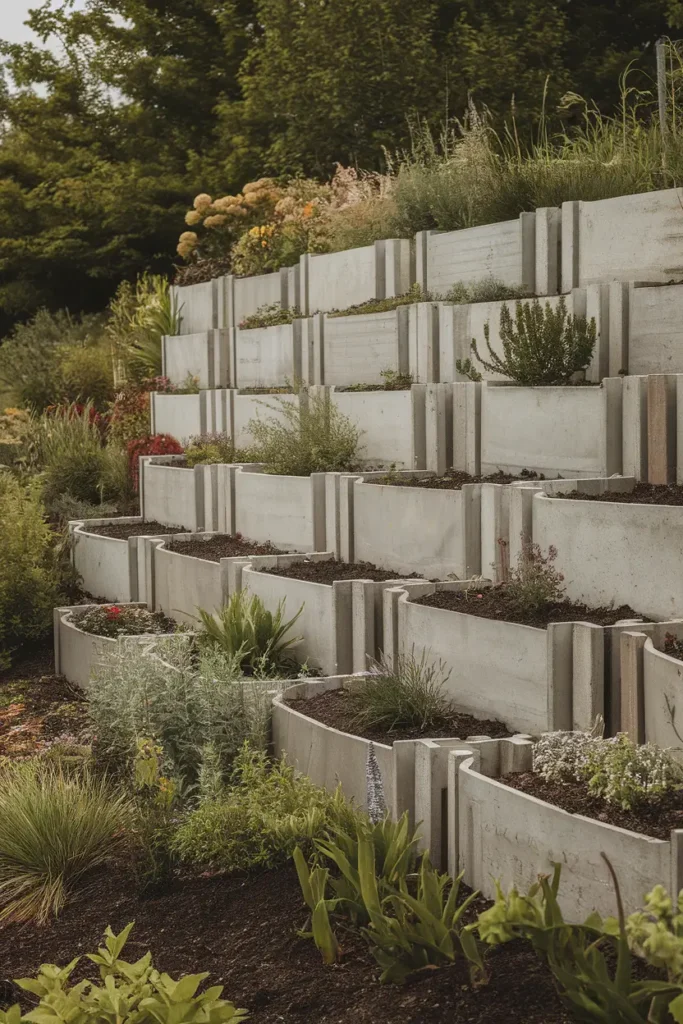
Crib walls are constructed using interlocking concrete or timber “cribs,” which create a series of open cells.
These cells are then filled with soil, gravel, or other materials to provide support and weight to the structure.
Crib walls are eco-friendly due to their ability to incorporate greenery, allowing plants to grow within the gaps.
This provides a harmonious, natural look while ensuring functionality, making them ideal for projects where aesthetics and sustainability are equally important.
14. Living Walls
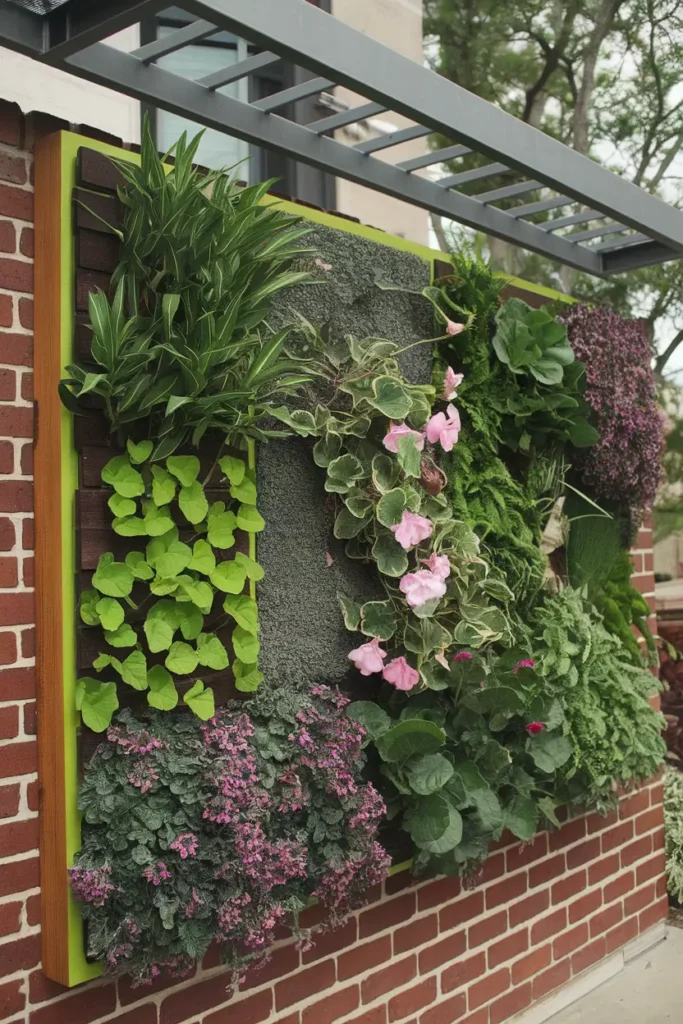
Living walls serve a dual purpose by providing structural support while also integrating greenery into the design.
These walls use vegetation and specially designed planters to create a vertical garden that can act as a retaining wall.
Living walls are perfect for environmentally conscious homeowners or businesses looking for eco-friendly solutions. They improve air quality, reduce heat, and bring a lush, vibrant aesthetic to any space.
For added sustainability, they can even incorporate irrigation systems to keep the plants healthy year-round.
15. Tiered Walls
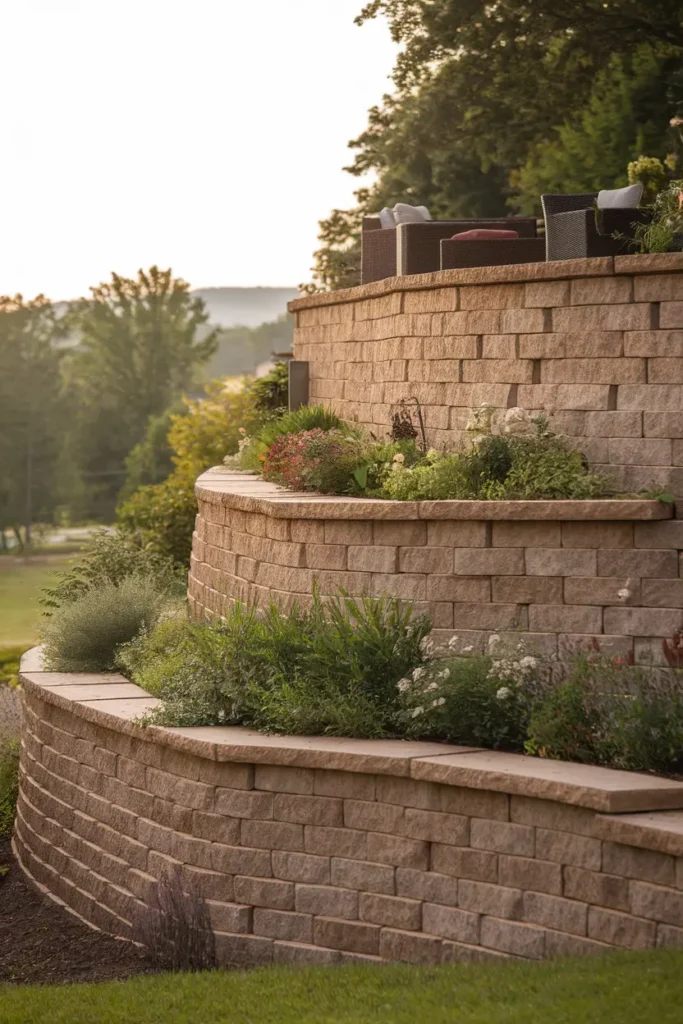
Tiered retaining walls are an excellent solution for stabilizing large slopes while adding visual interest and dimension to your outdoor space.
By breaking up the slope into multiple levels, each tier can feature a unique material, color, or aesthetic.
These levels can also serve as planting beds, creating a cascading effect with flowers, shrubs, or even small trees.
Tiered walls are both functional and visually appealing, making them a versatile choice for complex landscapes.
16. Curved Walls
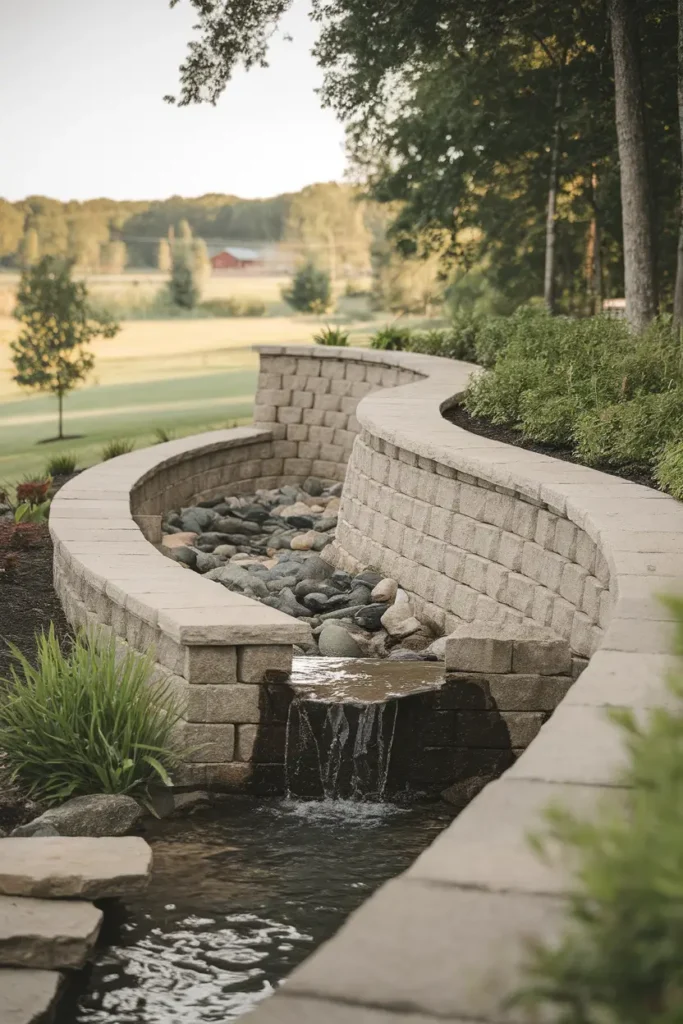
Curved retaining walls offer a softer, more elegant alternative to straight lines, adding a sense of flow and movement to your landscape design.
These walls can be crafted from materials like stone, brick, or wood to highlight the gentle arcs and enhance their aesthetic appeal.
Curved walls are especially effective in creating focal points or enclosing garden spaces, and they can also serve as seating areas within outdoor designs.
Their ability to blend practicality with artistry makes them a favorite among landscape architects.
17. Dry-Stack Walls

Dry-stack walls are constructed without the use of mortar, relying on gravity and the precise placement of stones or bricks for stability.
This technique creates a rustic, organic look that blends seamlessly into natural landscapes.
Dry-stack walls are typically made from flat stones or bricks, making them ideal for DIY projects due to their simplicity.
While they work best for smaller retaining needs, they can be reinforced with backing or additional materials for greater stability.
18. Water Feature Walls

Water feature walls combine the practicality of a retaining wall with the luxury of a built-in water element.
Incorporating features such as fountains, cascading waterfalls, or even small ponds, these walls add elegance, soothing sounds, and visual intrigue to your yard.
They are a great way to create a focal point while still serving a functional purpose.
With options to use stone, concrete, or even glass, water feature walls can be customized to complement any landscape design. They are perfect for those who want to merge functionality with a touch of luxury.
Factors to Consider Before Building a Retaining Wall
Before discussing design ideas, it’s essential to evaluate a few factors to ensure your retaining wall is functional and lasts for years.
- Purpose: Is your retaining wall for aesthetic value, erosion control, or property division? Knowing the primary purpose of the wall will help you choose the right materials and design.
- Slope and Drainage Needs: Assess the slope and water drainage of your property. Properly built walls should allow water to flow away from the structure to prevent damage.
- Material Durability: Different materials offer varying durability levels. Think about the climate and potential exposure to elements when choosing between wood, concrete, stone, or other materials.
- Budget: Your budget will heavily influence the materials and size of the wall. Fortunately, options range from affordable DIY materials to high-end custom finishes.
Now that you’re ready to plan, here are 18 distinctive retaining wall ideas to inspire your project.
FAQs
What is the most cost-effective material for a retaining wall?
Concrete blocks and timber are typically the most budget-friendly options, especially for DIY projects. Reusing salvaged materials, like bricks or stones, can also lower costs.
How high can you build a retaining wall?
The height of your retaining wall depends on its purpose and the material used. Typically, walls up to 4 feet can be built without special reinforcements, but taller walls may require engineering expertise and permits.
Do retaining walls need drainage?
Yes. Proper drainage is essential for retaining walls to prevent water buildup, which can weaken the structure. Drainage options include gravel, weep holes, and perforated pipes.
Bottom Lines
Choosing the right retaining wall means balancing practicality with style. Each material and design option offers unique advantages, so consider your property’s needs, landscape aesthetics, and budget before making a decision.
At the end of the day, your retaining wall should enhance your outdoor space while serving its functional purpose. Whether you go for a natural stone boulder wall, a modern sheet pile design, or a lush living wall, the possibilities are endless.
Explore your creativity and build a retaining wall that transforms your outdoor space into something extraordinary!

